Chefchaouen, known as Morocco’s Blue Pearl, enchants travelers with its sky-hued walls, heritage, and mountain backdrop. Whether you seek the best places to visit in Chefchaouen or simply crave an immersive cultural escape, this city promises a tapestry of unforgettable moments. From exploring the labyrinthine medina to savoring local delicacies, every step feels like stepping into a painting. Many highlight the best time to visit Chefchaouen as spring or autumn, yet each season unveils wonders. If you visit Chefchaouen Morocco for the first time, expect a sensory feast and a promise of things to do in Chefchaouen at every turn.
Within these winding lanes, you’ll uncover countless places to visit in Chefchaouen that speak to its past and welcoming spirit. From must-see places in Chefchaouen like ancient fortresses to tranquil squares with local banter, the city hums with authenticity. Deciding on the best time to visit Chefchaouen can be a challenge, as each season reveals a different facet of charm. Still, whenever you wander through this medina, you’ll find abundant things to do in Chefchaouen, from sipping mint tea at a rooftop café to capturing sunlit alleyways in photos. Embrace these best places to go in Chefchaouen with an open heart.
Table of Contents
Medina Magic: Immersion in Chefchaouen’s Iconic Blue Maze
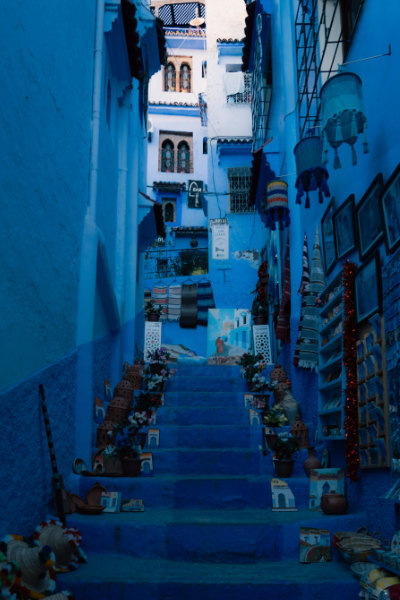
The first time I stepped into the medina, it felt like I had wandered into an artist’s dream. Every wall, doorway, and alleyway was painted in enchanting shades of blue, and the atmosphere seemed to hum with quiet wonder. Locals greeted me with warm smiles, their friendliness adding a welcoming glow to those azure corridors. I remember stopping at a tiny shop selling handwoven rugs, the vendor patiently sharing stories of Chefchaouen’s traditions. It was here I realized this maze of cobalt passages isn’t just one of the best places to visit in Chefchaouen, it’s the very heartbeat of the city.
Exploring the medina is among the most iconic things to do in Chefchaouen. Let yourself get lost as you wander through the labyrinth, discovering hidden courtyards, aromatic bakeries, and vibrant murals that capture the city’s diverse heritage. Embrace the slower pace: stop for a glass of mint tea at a rooftop café, or snap photos of the intricate geometric patterns adorning classic Andalusian doors. The medina’s narrow lanes also lead you to local artisans crafting hand-painted ceramics and embroidered textiles. As one of the must-see places in Chefchaouen, this historic quarter offers an authentic blend of cultural legacy and artistic flair.
Fees & Official Info
The medina itself has no entrance fee. Some small galleries or private museums might charge nominal amounts. For official cultural guidelines and local events, visit Morocco’s Official Tourism Portal.
The Majestic Kasbah: A Tale of Heritage
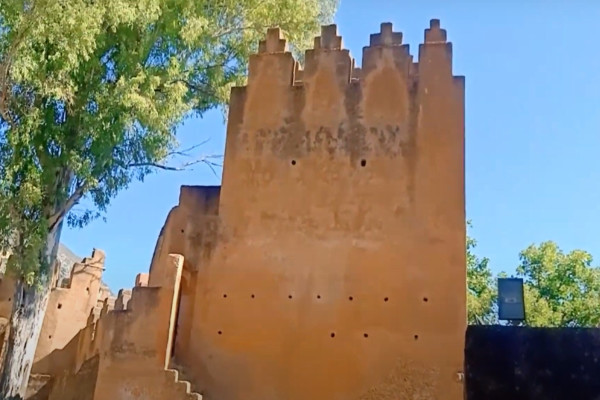
The first glimpse of the Kasbah’s towering walls filled me with awe. Standing proudly in the medina, this fortress felt like a sentinel that had silently observed the city’s evolution over the centuries. Wandering through its rustic corridors, I couldn’t help imagining the footsteps of past generations who once sought refuge or ruled within these walls. The blend of Spanish, Berber, and Arab influences resonated in each stone, whispering centuries of stories. In that moment, I understood why this ancient bastion is frequently highlighted as one of the best places to visit in Chefchaouen Morocco for a journey through time.
Stepping inside the Kasbah, you’ll find a small museum displaying traditional clothing, historic photographs, and artifacts that illuminate Chefchaouen’s rich tapestry of influences. A climb up the fortress tower unveils panoramic views of the medina’s blue rooftops and the surrounding Rif Mountains, a must-do for photography enthusiasts. The serene Andalusian garden at the courtyard’s center is perfect for a contemplative stroll, showcasing flora that thrives in Chefchaouen’s mild climate. Visiting the Kasbah embodies the best time to visit Chefchaouen for history buffs, allowing you to trace the city’s heritage while surrounded by awe-inspiring architecture rooted in centuries past.
Fees & Official Info
A small entry fee applies to access the Kasbah and museum.
Uta el-Hammam Square: The City’s Social Core
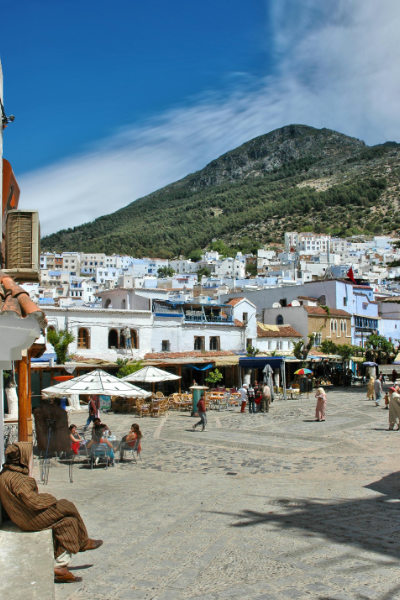
When I arrived at Uta el-Hammam Square for the first time, the lively hum of conversation and the irresistible aroma of sizzling tagines greeted me. Locals and travelers congregated in this open space, forging a colorful tapestry of cultures. Street performers, curious cats, and energetic café waiters added to the vivacious spirit that defines this square. Sinking into a chair at a quaint café, I found myself chatting with friendly strangers who quickly became companions. It was here I felt the pulse of the city, understanding that Uta el-Hammam Square stands among the best places to go in Chefchaouen for genuine connection.
Uta el-Hammam Square brims with things to do in Chefchaouen, from people-watching to indulging in flavorful Moroccan cuisine. Lined with cafés and small restaurants, the square invites you to taste local specialties like harira soup and sweet pastries served with mint tea. Artisans often set up stalls showcasing handmade crafts, providing an opportunity to find unique souvenirs. By day, it’s a bustling locale where you can witness everyday life unfold; by night, lantern light illuminates lively gatherings. Whether you’re interested in live music, sampling street food, or simply absorbing the city’s warmth, this square captures the essence of Chefchaouen’s communal heartbeat.
Fees & Official Info
No entry fee is required to enjoy the square.
The Grand Mosque: Spiritual Symbol of Chefchaouen
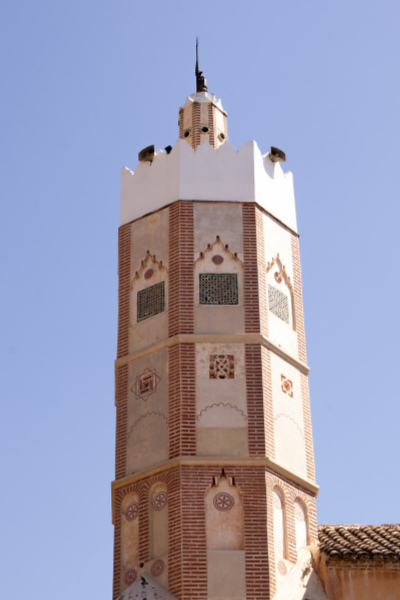
Approaching the Grand Mosque, I felt a gentle hush descend upon me, as though I were stepping onto sacred ground. Its octagonal minaret, a distinctive architectural feature, soared gracefully above the surrounding rooftops. Locals paused briefly in greeting, then continued their daily routines, a testament to the mosque’s role as a living spiritual center. While non-Muslim visitors typically cannot enter the prayer hall, simply standing in its courtyard brought a sense of calm. In that stillness, the city’s tapestry of faith and tradition came alive, revealing why this majestic landmark remains one of the must-see places in Chefchaouen.
Though access to the interior is usually reserved for worshippers, the mosque’s exterior is a testament to Chefchaouen’s blend of Andalusian and Moroccan influences. Its adobe-hued walls contrast beautifully with the predominantly blue medina, creating a striking focal point for photographers. Observing local life around the mosque, particularly during call to prayer, feels both intimate and insightful, reflecting the importance of community and faith. Stop by at different times of day to see how sunlight transforms the ambiance. Surrounded by quiet lanes dotted with workshops, the Grand Mosque area presents a peaceful retreat in the midst of bustling places to visit in Chefchaouen.
Fees & Official Info
No entrance fee is required to walk around the mosque’s exterior. For respectful travel tips and religious site guidelines, see Morocco’s Official Tourism Portal.
Ras El-Maa: Serenity by the Water
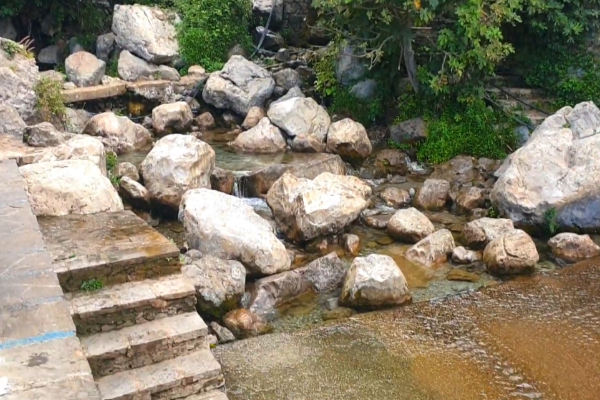
My first glimpse of Ras El-Maa was like a breath of fresh air literally. After wandering through the medina’s winding lanes, the gentle sound of rushing water instantly soothed my spirit. Locals gathered at this natural spring to cool off, wash clothes, and chat about the day’s events. It was a slice of authentic Moroccan life, unhurried and calm. Standing there, I felt deeply connected to Chefchaouen’s roots, as though I had found a secret sanctuary. Watching sunlight dance across the flowing stream reminded me why this idyllic spot is considered one of the best places to visit in Chefchaouen.
Ras El-Maa is a haven of tranquility where the babbling waters from the nearby mountains provide a refreshing contrast to the bustling medina. Sit on the rocks and dip your feet in the cool stream, or stroll along the simple pathways that wind up the slope, offering glimpses of the city’s iconic blue facades. The surrounding landscape invites meditation and leisurely exploration, making it an excellent locale for recharging before continuing your adventures. Whether you’re a photographer capturing the interplay of light on water or a traveler seeking a peaceful retreat, Ras El-Maa epitomizes the gentler side of things to do in Chefchaouen.
Fees & Official Info
Access is free.
Spanish Mosque Vantage Point: Sweeping Mountain Views
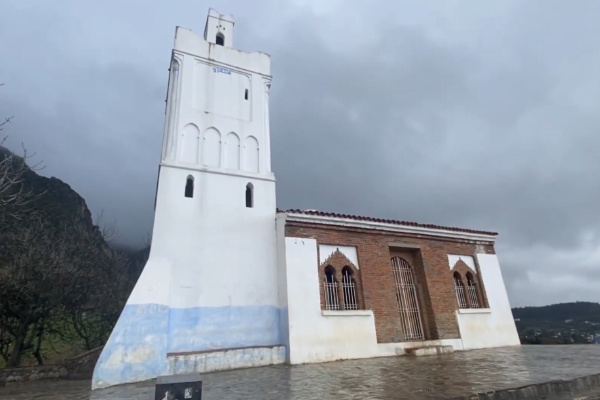
When I spotted the Spanish Mosque perched on a hilltop, I felt a pull to follow the winding path leading up to it. As I ascended, Chefchaouen’s vista gradually unfurled: the patchwork of blue rooftops, the gentle haze of the Rif Mountains, and the shimmer of daylight dancing across the city walls. Upon reaching the mosque, I was enveloped by an almost surreal tranquility. Gazing down, I realized I had discovered one of the best places to go in Chefchaouen if you crave both reflection and breathtaking scenery. That silent panorama felt like a gift from the land itself.
Built in the 1920s, the Spanish Mosque is no longer used for formal worship but remains a symbolic reminder of foreign influence on Chefchaouen’s history. A short hike brings you to an elevated plateau perfect for witnessing sunrise or sunset, both times capturing Chefchaouen’s distinctive azure glow. Photographers adore this vantage point, where rolling hills frame the medina below. If you time your visit with evening prayer calls, you’ll hear a chorus of melodies echo through the valley. The experience underscores the best time to visit Chefchaouen for magical light, whether golden dawn or dusk, and offers a soulful encounter with Morocco’s natural beauty.
Fees & Official Info
No fee is required. Wear sturdy shoes for the hike.
Akchour Waterfalls: Chefchaouen’s Lush Retreat
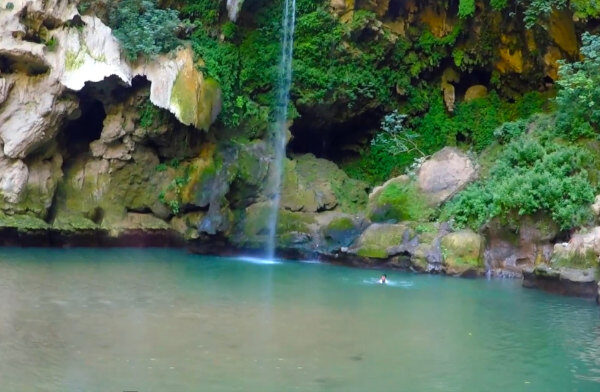
The journey to Akchour Waterfalls was an adventure in itself: a winding route through verdant hills where I glimpsed rural villages and smiling locals tending their fields. The crescendo of rushing water guided me closer, and upon arrival, I was awestruck by the emerald pools and mist-kissed air. Taking off my shoes, I waded into the cool waters, feeling a rejuvenating thrill race through me. Amid the natural beauty and joyous chatter of fellow explorers, I felt an ineffable connection to Morocco’s wilderness. This oasis near Chefchaouen affirmed my belief that nature’s serenity is often the most profound treasure of travel.
Akchour Waterfalls exemplify some of the most enchanting places to visit in Chefchaouen for outdoor enthusiasts. The trek to the main cascade meanders past smaller falls and hidden rock pools, each revealing a new perspective on the region’s lush flora. You can pause to picnic by the riverbanks, savoring the calming flow of water and birdsong overhead. For an extra thrill, tackle the slightly challenging climb to the larger waterfall, where crisp, clear water awaits. Guides are often available for those who prefer local expertise. Visiting Akchour merges the best of both worlds: a refreshing nature escape close to Chefchaouen’s cultural core.
Fees & Official Info
No official entrance fee is charged, though guides set their own rates.
The Local Tanneries: Crafting Leather Traditions
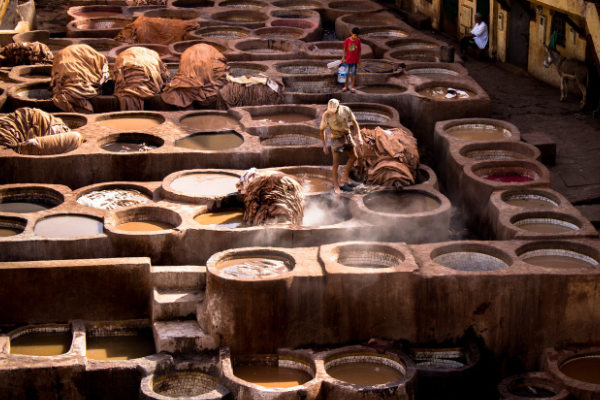
The moment I stepped into the tannery district, a swirl of earthy scents enveloped me, and I watched artisans expertly dipping hides into color-filled vats. Despite the pungent aroma, I was entranced by the dedication and skill required to transform raw leather into prized Moroccan goods. I recalled the stories of travelers comparing Chefchaouen’s tanneries to those in Fez, yet these felt more intimate and tied to the city’s unique identity. This hands-on craftsmanship revealed another facet of local heritage. Observing the process up close, I realized how these tanneries stand among the must-see places in Chefchaouen, especially for culture seekers.
Visiting the tanneries provides insight into traditional leatherworking methods passed down through generations. You’ll see workers meticulously cleaning and dyeing animal hides in a rainbow array of basins, often using natural pigments sourced from saffron, henna, and indigo. Wander the surrounding workshops, where hand-stitched slippers (babouches), bags, and jackets line the shelves, each bearing an authentic Moroccan imprint. If you’re feeling adventurous, step onto vantage points for a better view of the dyeing process. For those seeking a tactile reminder of their trip, purchasing a leather piece here can be a meaningful way to support local artisans and take home authentic craftsmanship.
Fees & Official Info
No set fee to view the tanneries from public areas. Guided tours or vantage points may incur a small cost.
Talassemtane National Park: Wilderness Beyond the Blue
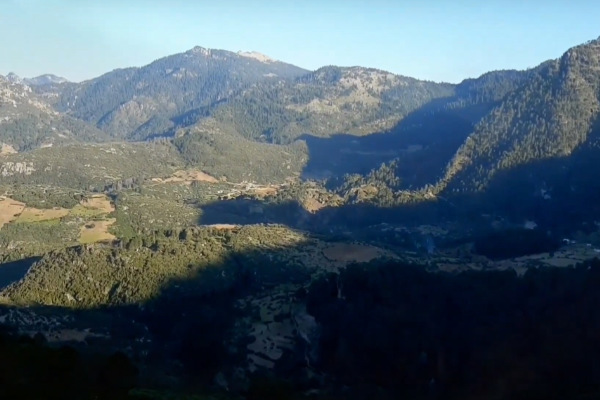
Venturing beyond Chefchaouen’s city limits, I found myself in Talassemtane National Park, enveloped by fragrant pine forests and dramatic limestone peaks. The crisp mountain air and expansive vistas reminded me that there’s far more to the region than its famed azure walls. I felt both excited and humbled, observing herds of goats navigating rugged terrain as I hiked sun-dappled trails. Each turn uncovered a different panorama waterfalls, gorges, and hidden valleys teeming with wildflowers. That day, I understood how Chefchaouen’s magic transcends urban confines, making Talassemtane a crucial addition to any list of the best places to visit in Chefchaouen Morocco.
Within Talassemtane National Park, travelers encounter a diverse ecosystem perfect for hiking, birdwatching, and eco-adventures. Trails range from mild pathways suitable for casual walkers to challenging routes for seasoned trekkers, offering everything from panoramic cliff overlooks to tranquil riverbanks. Villages tucked into the landscape provide glimpses of rustic Rif Mountain life, complete with terraced farms and traditional cooking methods. Adventurous visitors might embark on multi-day treks, camping under star-filled skies that feel almost otherworldly. As one of the best places to go in Chefchaouen for nature lovers, Talassemtane demonstrates Morocco’s ecological wealth, reminding us of the region’s harmonious balance of culture and wilderness.
Fees & Official Info
Entry to most sections of the park is free, though certain protected areas might require permits.
Ethnographic Museum: Windows into Chefchaouen’s Soul
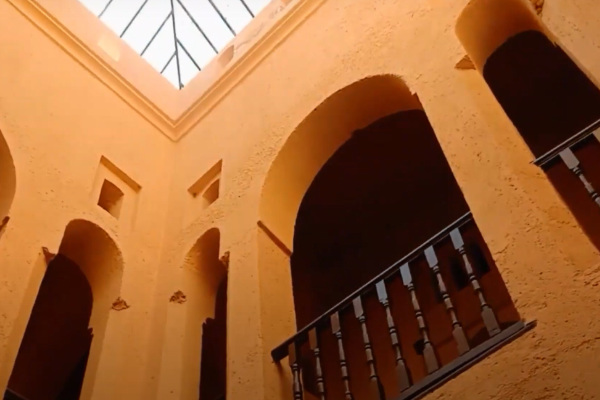
Stepping into the Ethnographic Museum felt like walking into Chefchaouen’s collective memory. Shelves displayed ancient pottery, weavings, and instruments that once echoed through mountain villages. I lingered by an exhibit showcasing vibrant Berber textiles, each thread telling a story of generations. The museum’s hushed corridors seemed to hush me, too, as if inviting deep reflection on how history has shaped this famously blue city. Each artifact reminded me of the complex tapestry of identities that coexist in Chefchaouen. Glancing around at other visitors, I realized we were all sharing in a reverent discovery of the best places to visit in Chefchaouen for cultural insight.
Designed to preserve regional customs, the Ethnographic Museum hosts displays of traditional garments, jewelry, and everyday tools that highlight local craftsmanship. Informative placards detail how Chefchaouen evolved from a modest mountain settlement into the “Blue Pearl” it is today. If timing allows, you may catch temporary exhibits focusing on contemporary art or photography, bridging the gap between ancient tradition and modern creativity. Exploring this space encourages questions about the city’s multifaceted roots, from Andalusian refugees to Berber tribes. As one of the must-see places in Chefchaouen for history buffs, the museum enriches your understanding of local customs and communal values.
Fees & Official Info
A modest entrance fee is required.
Kasbah Museum Gardens: A Tranquil Green Oasis
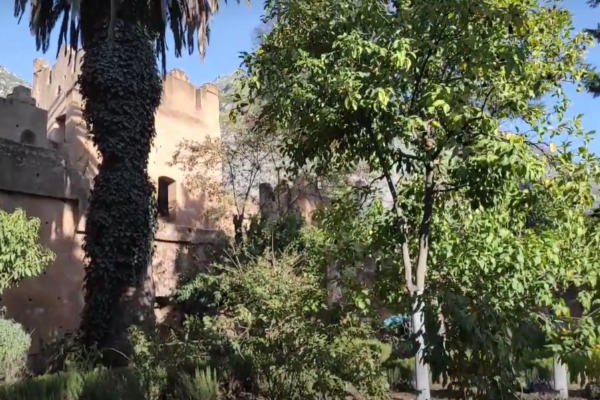
Nestled behind the fortress walls of Chefchaouen’s Kasbah, I discovered lush gardens brimming with flowers and the gentle murmur of fountains. Wandering these pathways, I felt transported to a serene retreat, a contrast to the lively medina just steps away. The interplay of blooms, leafy canopies, and glimpses of the Kasbah’s battlements evoked a sense of timelessness. I found a quiet bench, closing my eyes and absorbing the harmonious blend of birdsong and distant chatter. It dawned on me that amid the city’s vibrant blues, a hidden green heart thrives, confirming why these gardens feature among the places to visit in Chefchaouen for calm reflection.
A visit to the Kasbah Museum Gardens complements your exploration of the fortress itself. The manicured flower beds, aromatic herbs, and elegant fountains serve as a refreshing pause, particularly during warmer months. Delicate Moorish design elements appear in the tiled walkways, reminiscent of Andalusian influences shaping Chefchaouen’s cultural identity. For art enthusiasts, small outdoor exhibits sometimes display local paintings or sculptural works. The gardens also offer an excellent vantage point to admire the Kasbah’s architecture from a more serene perspective. If you seek a moment of reprieve amid your city wanderings, these gardens exemplify the things to do in Chefchaouen that nourish both mind and soul.
Fees & Official Info
Entry is typically included with the Kasbah museum ticket.
Best Times to Visit Chefchaouen, Safety, Budget, and Travel Tips
Optimal Seasons and Climate
Many travelers agree that the best time to visit Chefchaouen falls between March and May or September and November. Spring delivers mild temperatures and blooming landscapes, enhancing the charm of the places to visit in Chefchaouen with vibrant green accents against the city’s famous blues. Autumn offers pleasantly cool weather and fewer crowds, ideal for exploring sites like the Spanish Mosque or Akchour Waterfalls in peace. Summers can be hot, especially around midday, but the higher elevation often brings refreshing breezes. Winters remain relatively mild compared to other Moroccan regions, though nights can get chilly in the Rif Mountains.
Regardless of the season, Chefchaouen’s medina stays lively, filled with things to do in Chefchaouen such as souk shopping and café hopping. While peak tourism months see a bit more activity, the city rarely feels overrun. If you prefer a quieter escape, planning to visit Chefchaouen Morocco outside major holidays provides a gentler pace. Keep in mind that local religious observances may alter store hours or availability of certain activities, so a quick check on local calendars can help. Ultimately, each time of year holds its own subtle magic, ensuring that the best places to visit in Chefchaouen shine in all seasons.
Safety and Cultural Respect
Chefchaouen is widely regarded as one of Morocco’s safer and more welcoming cities, yet standard travel precautions remain wise. Petty theft is rare but not impossible, so keep valuables tucked away and maintain awareness in bustling areas like Uta el-Hammam Square. Dressing modestly is appreciated, especially near religious sites such as the Grand Mosque light, breathable fabrics that cover shoulders and knees work well, reflecting both comfort and respect. Ask permission before photographing locals, as politeness fosters genuine connections and encourages them to share more about the best places to go in Chefchaouen.
If you plan to hike or explore natural areas like Akchour or Talassemtane National Park, inform your accommodation or a friend of your intended route and timing. Hiring a certified local guide can provide both navigation assistance and enriching cultural context. Tread lightly in the environment: the city and its surroundings rely on sustainable tourism, so follow “leave no trace” principles and dispose of waste properly. Above all, remember that your curious yet considerate approach enriches your overall experience of the must-see places in Chefchaouen, nurturing mutual respect between visitors and the local community.
Budget Considerations
For those seeking budget-friendly travel, Chefchaouen offers a range of inexpensive options that make discovering the best places to visit in Chefchaouen Morocco accessible. Affordable guesthouses and hostels in the medina are plentiful, often featuring charming décor and rooftop terraces with panoramic views. Street food and local cafés can be both delicious and economical, allowing you to savor Moroccan delicacies like msemen (layered flatbread) or brochettes without stretching your wallet. Souk shopping can be reasonable, too: bargaining is the norm, but remember to do so politely. Supporting local artisans fosters sustainability and helps preserve traditional crafts.
Mid-range visitors might opt for stylish riads or boutique hotels where they’ll encounter tasteful design elements reflecting Chefchaouen’s Andalusian influence. Expect moderate prices for meals at sit-down restaurants serving signature dishes like lemon chicken tagine. Activities such as guided tours to Akchour Waterfalls or Talassemtane National Park add extra convenience and context, and often remain relatively inexpensive.
Splurge travelers can opt for high-end accommodations equipped with modern amenities while still enjoying the medina’s old-world allure. They might hire private guides to tailor excursions, ensuring personalized access to things to do in Chefchaouen off the typical tourist track. Overall, Chefchaouen’s range of lodgings, dining venues, and activities caters to varied budgets, reinforcing why it’s considered one of the best places to visit in Chefchaouen for all types of explorers.
Transportation and Accommodation Tips
Reaching Chefchaouen usually involves a bus journey or grand taxi ride from major cities like Tangier, Tetouan, or Fes. Public buses offer a more budget-friendly option, though schedules may be sporadic; private or shared taxis grant swifter travel but come at a higher fare. Once you visit Chefchaouen Morocco, you’ll find the city center compact and best explored on foot indeed, strolling the medina’s narrow paths is one of the quintessential things to do in Chefchaouen. If you need to venture outside the city, local taxis are available, but negotiate fares before setting off to avoid surprises.
Accommodation options abound, from simple hostels to grand riads. Staying within or near the medina immerses you in local culture and grants easy access to the must-see places in Chefchaouen, such as the Kasbah or Uta el-Hammam Square. Book ahead during peak seasons, especially if your travel dates coincide with national holidays or festivals.
In many riads, you’ll receive the added treat of a homemade Moroccan breakfast, think warm bread, sweet jams, and fresh mint tea. If you’re craving extra privacy or traveling in a group, consider renting a small apartment with a terrace to soak up panoramic views. Ultimately, any of these lodging choices place you within easy reach of the city’s wonders, letting you tailor your experience around the best time to visit Chefchaouen for your schedule and interests.
Conclusion
Chefchaouen’s enduring enchantment lies in its ability to harmonize natural grandeur, cultural depth, and a serene rhythm that permeates every cobalt-tinted street. From the historic fortifications of the Kasbah to the soothing waters of Ras El-Maa, the best places to visit in Chefchaouen weave together moments of spiritual reflection and unbridled wonder. You may find yourself reveling in the medina’s vibrant artisan shops one moment, and the next, gazing over sweeping mountain panoramas from the Spanish Mosque vantage point. It is this balance between the bustle of daily life and the meditative quiet of a mountainside retreat that makes Chefchaouen a destination unlike any other in Morocco.
With its fusion of history, nature, and genuine hospitality, Chefchaouen stands as a testament to Morocco’s diverse tapestry. Let these eleven destinations serve as a starting point, guiding you to the must-see places in Chefchaouen that capture the city’s spirit. Ultimately, the deeper beauty lies not just in the azure passageways or the lush mountain trails, but in the welcoming hearts of those who call Chefchaouen home. By immersing yourself in the city’s gentle pace and cultural wealth, you’ll depart with cherished memories ones that underscore why Chefchaouen remains one of the best places to visit in Chefchaouen Morocco, time and time again.
To continue your Moroccan adventure and uncover even more breathtaking destinations, don’t miss our guide to 11 Spellbinding Places to Visit in Morocco: Uncover the Best Destinations and Hidden Gems. From the vibrant medinas of Marrakech to the golden dunes of the Sahara, explore the magic that makes Morocco unforgettable.
How to Visit Chefchaouen?
Chefchaouen is accessible by road and is well-connected to major cities in northern Morocco.
–By Bus: Buses operated by CTM and other local companies run regularly from cities like Tangier, Tetouan, and Fes. These are affordable and reliable, with scenic routes showcasing the beauty of the Rif Mountains.
–By Taxi: Grand taxis are available for a more direct and flexible journey, though they are pricier than buses. Sharing a taxi with other travelers can reduce costs.
–By Car: Renting a car is another option, allowing for stops along the way to enjoy the picturesque landscapes. The drive from Tangier or Fes takes approximately 3–4 hours.
Once in Chefchaouen, the medina is compact and best explored on foot, as vehicles are not allowed in most areas.
Is Chefchaouen Worth Visiting?
Absolutely! Chefchaouen is one of Morocco’s most unique and captivating destinations.
Its medina, painted in mesmerizing shades of blue, offers a tranquil and photogenic setting unlike any other in the world.
It’s a perfect blend of culture, history, and nature, with attractions like the Kasbah, Spanish Mosque, and Akchour Waterfalls.
The city provides a quieter, more laid-back atmosphere compared to bustling cities like Marrakech or Fes, making it ideal for relaxation.
Whether you’re a photographer, history enthusiast, or nature lover, Chefchaouen’s charm leaves a lasting impression.
How Many Days to Visit Chefchaouen?
Two to three days is ideal for a fulfilling visit to Chefchaouen.
–Day 1: Explore the medina, visit the Kasbah, and enjoy Uta el-Hammam Square.
–Day 2: Hike to the Spanish Mosque for sunrise or sunset and visit Ras El-Maa. Spend the rest of the day exploring the artisan shops or relaxing in a café.
–Day 3 (Optional): Venture to nearby attractions like Akchour Waterfalls or Talassemtane National Park for a nature-filled adventure.
This time frame allows you to fully immerse yourself in the city’s serene pace while exploring its key highlights.
Is Chefchaouen Safe to Visit?
Yes, Chefchaouen is widely regarded as one of the safest cities in Morocco.
–For Travelers: Crime rates are low, and locals are known for their friendliness and hospitality.
–Solo Travelers: It’s a great destination for solo adventurers, with many visitors reporting positive interactions and a welcoming atmosphere.
–Precautions: As with any travel destination, it’s advisable to stay aware of your belongings in crowded areas like markets and squares.
The city’s compact size and community-oriented culture contribute to a secure and comfortable environment for all visitors.
Chefchaouen’s peaceful ambiance and warm community make it a must-visit for anyone exploring Morocco.

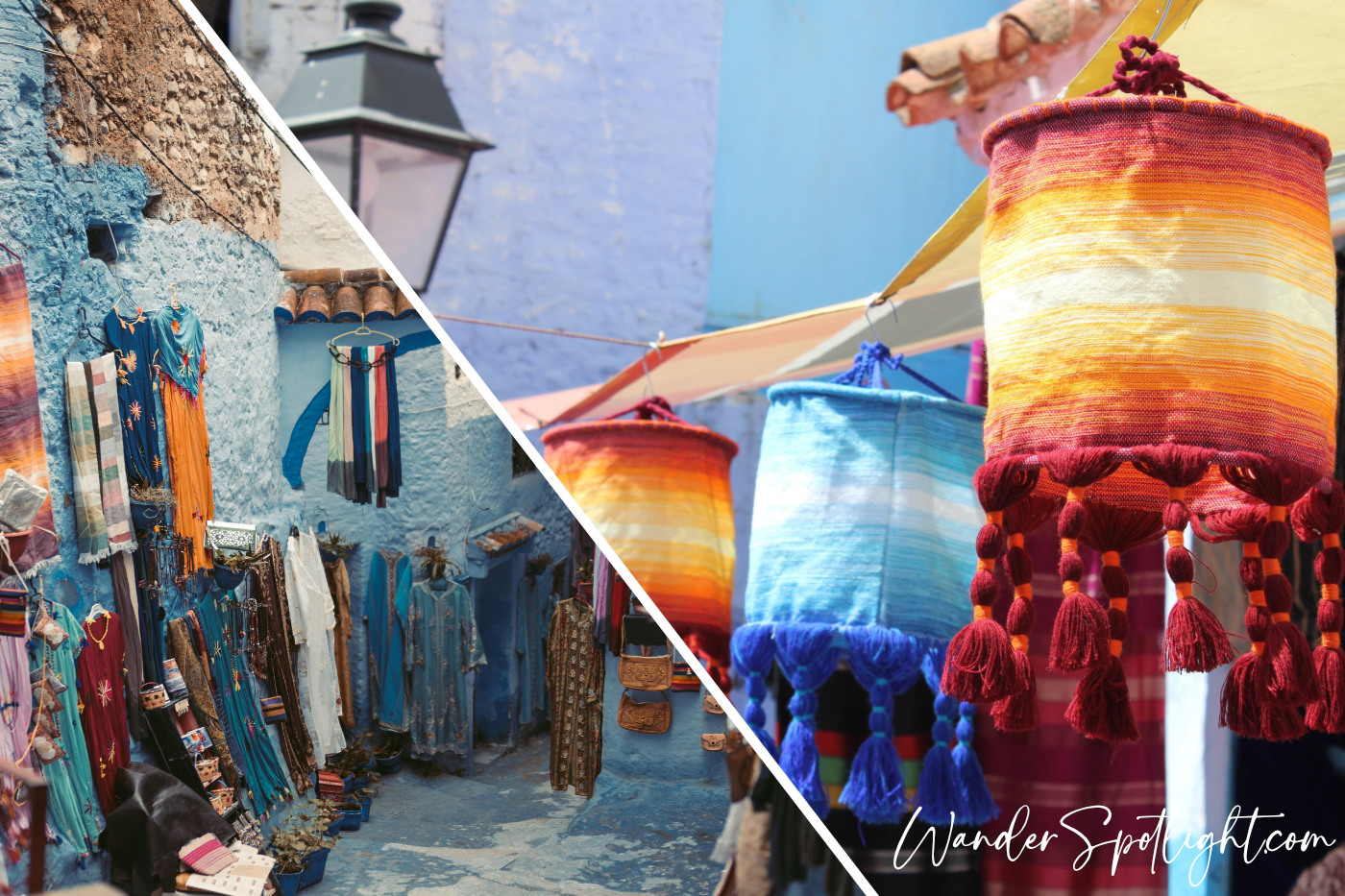

1 thought on “11 Mesmerizing Best Places to Visit in Chefchaouen Morocco for an Unforgettable Journey”